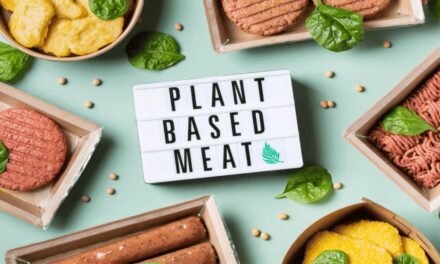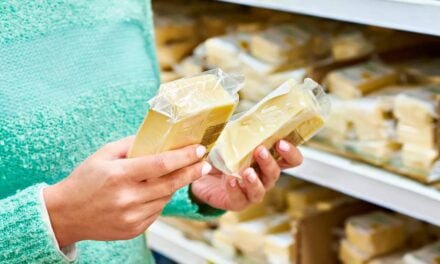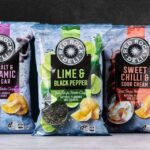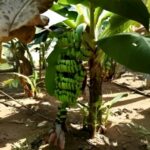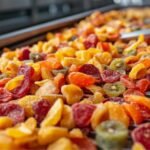Packaging of meat and meat products has always been challenging because of the perishable nature of the product. As a result, the packaging market must continue the race toward finding more new and innovative ways, write V. Pathak, Z.F. Bhat, S.A.A. Bukhari, S.K. Kotwal, and R.R. Kumar
Table of Contents
The packaging is a scientific method of preserving the quality and safety of the food it contains from the time of manufacture to the time it is used by the consumer and also to display the product in the most attractive manner for consumer preference. The ability to convince a potential buyer to use a given product has always been influenced by product packaging and has become an important marketing tool for communicating brand values. Besides protecting the product from physical, chemical, or biological damage (Dallyn and Shorten, 1998), it should also enhance the marketability of the product and be environment friendly (Hurme et al., 2002).
The only criterion customers have at the point of purchase of fresh meat cuts is visual appearance. Consequently, desirable meat colour must be maintained during chilled storage, distribution and subsequent retail display if preservative packaging systems are to be effective. In the processed meat products, other factors such as dehydration, lipid oxidation, discolouration, and loss of aroma must be taken into account
Packaging of meat and meat products has always been challenging because of the perishable nature of the product. Today, packaging constitutes an important department of a food processing industry and many meat packaging systems are available with different attributes and applications. These systems range from overwrap packaging for short-term chilled storage and retail display to 100% carbon dioxide atmosphere packaging for long-term chilled storage (Payne et al., 1998).
Modern meat packaging technologies include vacuum packaging, modified atmosphere packaging, controlled atmosphere packaging, active packaging, smart packaging, etc. These strive to enhance food safety and quality in a natural way as far as possible (Hotchkiss, 1995). The trends in innovative packaging techniques are discussed in the text that follows.
Packaging Forms and Materials for Packaging of Meat and Meat Products
Packaging constitutes both flexible and rigid materials, alone or in combination with other preservation methods, to offer the necessary barrier, inactivation, and containment properties required for successful food packaging. Examples of typical flexible packaging materials include polyester, polypropylene, polyethylene, polyvinyl, polyolefins, vinylidene, vinyl chloride, surlyn, or nylon, which provide the needed characteristics such as strength, permeability, and saleability in the food industry (Cutter, 2002; Stollman et al., 1994). Additionally, flexible packaging materials can be combined with gaseous environments to extend the shelf life of many foods, including meat and poultry.
Besides synthetically derived packaging materials, flexible packaging can encompass the use of edible films, gels, or coatings made from polysaccharides, proteins, lipids, or composites of any or all three. The benefits of using edible films as packaging materials are threefold: these films may resist the migration of outer moisture into the food during storage; films may serve as gas and solute barriers; and films compliment other types of packaging by improving the quality and shelf life of foods (Ooraikul, 1991). And finally, the combination of rigid packaging materials made from metal, glass, or plastic and combined with heat, provides the most effective and widely used method of food preservation.
Nearly all-available films for meat packaging are of thermoplastic materials, and therefore heat seal able, resulting in hermetically sealed plastic pouches, bags, etc. A high oxygen barrier is important in the application of films for packaging meat and meat products. Films made of polyvinylchloride (PVC), polyethylene (PE) or polypropylene (PP) have a relatively high oxygen permeability, whereas polyvinylidene chloride (PVDC), polyester (PETP), polyamide (PA) and cellulose film (ZG) are less or almost non-permeable to oxygen. The latter materials are therefore better suited for packaging meat and meat products.
However, the materials of the first group are frequently used as laminates with materials of the second group in order to achieve special effects regarding mechanical strength, heat sealing properties or making the package practically impermeable to both oxygen and water vapour.
Packaging Techniques
The choice of packaging systems and the use depend on many factors including cost, the volume of product being handled, and presentation. Some of the recent methods used in the meat industry are:
Vacuum Packaging
Vacuum packaging refers to packaging in containers (rigid or flexible), from which substantially all air has been removed prior to the final sealing of the container. This method of packaging is actually a form of “modified atmosphere” since normal air is removed from the package. The various advantages of vacuum packaging are that these extend shelf life by controlling oxidative rancidity and by preventing the growth of normal spoilage bacteria (aerobic organisms such as pseudomonas are suppressed and lactic acid bacteria are favoured which can grow to high numbers without causing spoilage), reduce freezer burn and loss of moisture at product surface, require minimum storage space and Leakers are easily detected (small puncture or pin hole in a vacuum pack is easily detected by looking for loose packages).
Today vacuum packaging is the most widely used method employed to extend the storage life of fresh meat (Bell and Garout, 1994). The air within the package must be evacuated to normal anoxic levels i.e. less than 500ppm to prevent browning due to residual oxygen. The exclusion of oxygen from meat surface immediately after carcass is broken into primals preserves the meat’s potential to re-oxygenate soon after retail pack display (Walsh and Kerry, 2002) The preservative effect of vacuum packaging is by inhibition of potent spoilage bacteria at normal meat pH under optimum vacuum packaged conditions (Gill, 1991).
The microenvironment within the pack will determine the type of micro-flora, which develops (Devore and Solberg, 1974). When meat is first vacuum packaged any residual oxygen remaining in the pack is consumed by meat and muscle pigments (Hood and Mead, 1993) and CO2 is produced as an end product of tissue and microbial respiration. Under a good vacuum the package head space consists of <1% O2 and 10-20% CO2 (Lambert et al., 1991) which restricts the growth of aerobic microorganisms such as pseudomonas and favours desirable facultative anaerobic organisms such as lactobacillus but also undesirable Bronchothrix thermosphacta.
These slow growing bacteria cause less offensive types of spoilage even at higher bacterial numbers than other aerobic organisms and will eventually cause spoilage but only after many weeks of storage. If vacuum packaging procedures are followed correctly, the storage life of meat can be extended (Muller, 1990).
Care must be taken to keep initial bacterial load as low as possible by following strict hygienic procedures. The temperature must be maintained at or near 0-degree Celsius (Brody, 1989). High pH and DFD meat must be avoided as early spoilage may occur (Humphreys, 1996). High vacuum levels result in the most desirable muscle colour and fat appearance. Vacuum packaged meat of normal pH (<5.8) can be stored for 12 (Eustace, 1989) to 14 weeks (Hood and Mead, 1993) at Oo C.
However, vacuum packaging is considered unsuitable for red meats for retail display purposes since the oxygen-depleted atmosphere causes the meat in these packages to appear purplish in colour and therefore not acceptable to consumers. Vacuum packaging is ineffective for whole carcasses or cuts which prevent the packaging film being closely applied to all surfaces (Gill, 1991; Gill, 1996). There are four basic ways; the first one involves the use of heat shrinking flexible packaging material around the primal cuts.
When exposed to heat it shrinks and increases film thickness, improves mechanical resistance and reduces the drip loss. The second type involves the use of preformed plastic bags/pouches made up of polyamide (PA) as the outer layer, while the inner core is polyethylene (PE). Polyamide provides barrier properties and physical strength while polyethylene provides sealing properties.
The third type provides the use of thermoforming trays in line from a base web. Here the product is placed into the tray and then a film web is allowed to cover the tray from a second reel of film followed by pack evaluation and vacuum sealing. The fourth type is vacuum skin packaging, in which the meat is placed in a rigid preformed tray or on the flat surface of a flexible base material followed by heat softening, evacuation and vacuum shrink sealing (Zagory, 1997).
Gas Packaging
Gas packaging can be defined as the alteration of the proportional volumes of the gases, which comprise a normal atmosphere. This type of packaging generally falls into two categories:
a) Modified Atmosphere Packaging (MAP)
Refers to enclosing a product in some type of barrier and modifying the atmosphere either by drawing a vacuum or filling with a gas mix. During storage the level of these gases will change due to respiration of the product and permeability of the film.
b) Controlled Atmosphere Packaging
A system where gases are added or removed to maintain a desired balance is called controlled atmosphere packaging. In this case the bulk bin or the storage vessel is virtually impermeable.
Advantages of Gas Packaging
Advantages of gas packaging arethat it allows meat to bloom (if the oxygenated red colour is desired, blend incorporated oxygen can be used to control colour), extends shelf life by controlling oxidation by displacing the oxygen with CO2 and N2 inhibits growth of normal aerobic spoilage organisms besides surface molds, prevents crushing of soft products as gas mixtures of CO2 and N2 equalize the pressure in the package and prevent package collapse and retains moisture but water can move from centre of product to surface resulting in staling.
In MAP systems each gas has a specific role to play in extending the shelf life and maintaining the appearance of packaged meat (Young et al, 1988). The most commonly used gases for the packaging of meat is CO2, N2 and O2 although other gases including CO, N2O, Argon, SO2 and Ozone have been tried to a limited extent (Church, 1994). The most commonly used gas mixture for fresh red meat is high O2, which has a minimum 60-70% O2 and 30-40% CO2 (Walsh and Kerry, 2002). Packaging in high oxygen extends the time for occurrence of microbiological spoilage and discolouration of meat (Sorheim and Nissen, 2000). Most chilled poultry products are sold in prewrapped O2 permeable film, which prevents moisture loss and the spread of contaminating microorganisms.
However, where O2 impermeable films are used, mainly for duck and turkey, the benefits are in extended shelf life (Hood and Mead, 1993). There are also reports that high CO2 atmosphere packaging of poultry extends the storage life up to three times that of storage in air (Baker et al., 1985). The modified atmosphere packaging for cured meat products has generated certain problems viz colour stability of cured meat products stored under illumination during retail display. Light exposure including intensity of light or illuminance, oxygen transmission rate of packaging material and residual level of O2 have been found to effect the colour stability of cured meats (Anderson et al., 1988; Yen et al., 1988; Moller et al., 2002).
Discolouration in controlled atmosphere packaging can be prevented only by exclusion of all O2 from the package, which requires special evacuation equipment and totally gas impermeable packaging materials (Gill, 1991). If CO2 is a major or sole component of the input atmosphere, then the quantity of added gas must be adjusted to assure that the intended atmosphere persists after dissolution of the gas into the product (Gill, 1995). For chilled meat, the most effective technology to date is the high CO2 controlled atmosphere packaging system. This regime limits microbial deterioration through optimal storage temperatures (-1.5°C), high levels of CO2, low residual O2 (=0.05%), and use of a gas impermeable film (Jeremiah et al., 1995).
Active and Intelligent Packaging
An active or intelligent packaging is a packaging, which has an additional desired role that improves the quality of the food product as a supplement to pure packaging properties. These properties can either be integrated in the packaging material or separated from it. Intelligent packaging contains an external or internal indicator for the active product history and quality. It has an inherent ability to gather information on its operating environment or history, to process that information in order to draw intelligent inferences from it and to act on those inferences by changing its characteristics in an advantageous manner.
Active packaging has an extra function in addition to that of providing a protective barrier against external influence. It can control, and even react to, phenomena taking place inside the package. It actively and constantly changes either package permeation properties or the concentration of various volatiles and gases in the package headspace during storage, or actively adds microbial, antioxidative or other quality improving agents, e.g., flavour enhancing substances, via packaging material into food in small amounts during storage.
Conclusion
The purpose of packaging is not only to preserve the quality and safety of the product it contains from the time of manufacture, but also to the time the consumer uses it. An equally important function of packaging is to protect the product from damage due to physical, chemical, or biological hazards, which can be attained through different types of packaging. The need to package foods in a versatile manner for transportation and storage, along with the increasing consumer demand for fresh, convenient, and safe food products presages a bright future for antimicrobial packaging. However, more information is required on the chemical, microbiological and physiological effects of these systems on the packaged food especially on the issues of nutritional quality and human safety.

ALSO READ:



